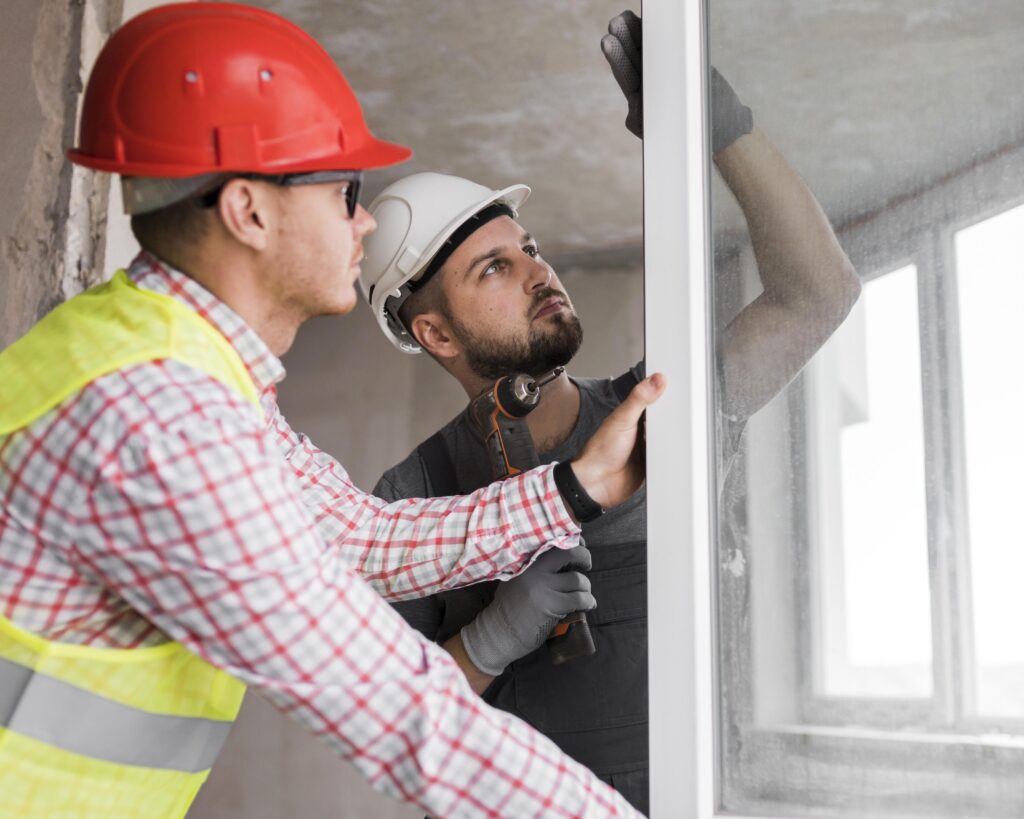Windows are vital to your home’s energy efficiency, security, and curb appeal. If you’ve noticed high energy bills, drafts, or condensation, it’s time to consider a window replacement. This project is one of the most cost-effective investments a homeowner can make, often returning significant value when the house sells. This ultimate 2026 guide will provide the straightforward blueprint you need to navigate the process, from understanding the return on investment (ROI) to choosing the best frame materials. Getting a window replacement right means securing your home and your budget for years to come.
Phase 1: Planning, Budgeting, and Value
1. How Much Should You Budget for New Windows?
Window replacement is a significant investment. For a typical home, budgeting between $15,000 and $35,000 for a full replacement is common. The final project costs depend heavily on the number of windows, the frame material, and the type of glass.
2. Understanding Your Return on Investment (ROI)
A quality window replacement project offers one of the best ROIs in home improvement, often recouping 60% to 80% of the cost at resale. Furthermore, the immediate savings on energy bills begin instantly, often justifying the initial expense.
3. Securing Financing and Rebates
Before starting your window replacement, explore financing options, such as low-interest home equity lines of credit (HELOCs). Always research federal and local energy rebates or tax credits available for installing high-efficiency windows.
4. When to Replace, Not Repair
If you only have one or two damaged panes, repair might be an option. However, if multiple windows show signs of rot, fogging, or significant drafts, a full window replacement is more economical in the long run.
5. Prioritizing Which Windows to Upgrade First
If a full home upgrade isn’t feasible, prioritize windows on the south and west sides of your house, as these receive the most direct sunlight and impact your home insulation the most.
Phase 2: Materials, Types, and Efficiency
6. Choosing the Best Window Frame Material
The frame material is crucial for durability and insulation. The most popular options for window replacement are:
- Vinyl: Most affordable, low maintenance, and highly energy efficient.
- Wood: Best insulation, beautiful aesthetic, but requires regular maintenance.
- Fiberglass: Highly durable, low maintenance, and extremely strong, offering a premium look.
7. Understanding Window Styles and Types
The style should match your home’s architecture. Common types include:
- Double-Hung: Most popular, easy to clean, slides up and down.
- Casement: Opens outward on a crank, offering the best seal and ventilation.
- Picture (Fixed): Does not open but offers maximum natural light and views.
8. Decoding Energy-Efficiency Ratings (U-Factor)
When comparing windows for energy efficiency, always look for the U-Factor. A lower U-Factor means better insulation and less heat loss, leading to lower utility bills.
9. The Role of Low-E Glass Coatings
Low-E (low-emissivity) glass has a microscopic coating that reflects infrared light, keeping heat out in the summer and in during the winter. This is a must-have feature for your window replacement.
10. Deciding Between Double- and Triple-Pane Glass
Most modern homes benefit from double-pane windows. Triple-pane windows offer superior sound dampening and insulation but come at a higher cost. They are best suited for very cold climates or homes near noisy areas.
Phase 3: Finding Your Contractor and Avoiding Pitfalls
11. Vetting and Hiring Your Window Installer

Never hire an installer without proper vetting. Check that they are fully licensed and insured in your state. A successful window replacement relies entirely on the quality of the installation.
12. Asking the Right Questions for Quotes
When collecting quotes, ask for specifics on the manufacturer, the U-Factor, and the installation warranty. A quote that is too low often signals a lack of proper waterproofing or cheap labor.
13. Understanding the Installation Process
A professional installation crew should complete the window replacement on an average-sized home in one to three days. They should meticulously prepare the opening, ensuring proper shimming and sealing for a tight, energy-efficient fit.
14. Avoiding Common Contractor Mistakes
Beware of contractors who rush the job or skip the important step of applying proper flashing and sealant around the frame. Poor waterproofing can lead to leaks and mold down the road.
15. The Final Inspection Checklist Once your new window replacement is complete, inspect every unit. Check that all windows open and close smoothly, that all locks function, and that there are no visible gaps or damage to the frames or surrounding trim.
FAQs
How long does a typical window replacement project take?
For a full house (10-15 windows), a professional crew can typically complete the window replacement installation in just 1 to 3 days.
What is the most energy-efficient window frame material?
Fiberglass and wood frames offer the best inherent insulation. High-quality vinyl is a close and more budget-friendly option for maximum energy savings.
Does replacing windows really increase my home’s value?
Yes, a window replacement project often yields a 60-80% return on investment at resale. It also drastically increases curb appeal and energy efficiency.
What is the single most important efficiency rating to check?
Check the U-Factor rating. A lower U-Factor means the window is better at insulating your home, reducing heat transfer, and lowering utility bills.
Will I need a building permit for a window replacement?
In most areas, yes, especially if the size or type of window is changing. Always confirm permit requirements with your local municipality.



